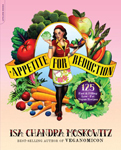Even before I became a mom of two adorable boys, I have always been interested in home economics and frugality. Making dinner on a budget, running a household, fixing things, saving money are all subjects I can read all day about (but sadly, don’t get to).
I don’t feel like being frugal is a punishment, or something that should make one upset. I think being frugal is a way to live so one has more choices in life. For example, if you run up your credit card on widgets, and have to work overtime for a year for your widgets, you are a slave to your widgets. If you don’t buy all those widgets, perhaps you can take a staycation and buy one widget with cash. What the heck is a widget anyway?
Regardless of the size of your household and income, you can streamline your life by making the choice to do so. Here are some books about simplifying and being thrifty that have been the most helpful to me:
The Complete Tightwad Gazette, by Amy Dayczyn. Dayczyn’s dream was to own a huge farmhouse in the country, have a brood of children (6!), and take care of business on her husband’s Navy income. She started a newsletter because she figured that other folks would have the same dream of having a good life on a shoestring budget, and the newsletter exploded into a phenomenon that she never imagined. The newsletters have now been compiled into one handy book, which is honestly my favorite book ever. The last issues were written in the late 90’s, so some of the information is out of date (Is it worth it to get the Internet, for example) but there are many tips applicable to today. And the general idea is still valid: if you want to live a happy life on less money, it’s definitely doable. You just have to keep the goal in mind and align your actions to reach it.
Miserly Moms and Frugal Families by Jonni McCoy. These books are “less extreme” than The Tightwad Gazette. McCoy basically states in the first few pages that she isn’t interested in making crafts out of dryer lint or reusing Ziploc bags, but she is willing to make less expensive choices to fit her budget. Personally, I don’t mind the “extreme-ness” of The Tightwad Gazette, but for people who want to ease into a more frugal lifestyle, these books may be a good choice for you.
America’s Cheapest Family series by Steve and Annette Economides. These books are relatively new and are very helpful for people who are just starting out on their frugal journey. The Economedes are a huge family, and employ many different methods to keep their costs down, such as grocery shopping once a month, and planning inexpensive fun for their family.
Making It: Radical Home Ec for a Post-Consumer World by Kelly Coyne. For the do-it-yourselfer in you, Making It is a modern guide to self-reliance. From making your own bath scrub, to keeping backyard chickens, there is a wide range of information packed in this volume. This book isn’t as much about frugality, but it will save you money, give you peace of mind, and make you feel accomplished all at the same time.
The Complete Idiot’s Guide to Simple Living by Georgene Muller Lockwood. I’ll go ahead and clarify, “simple living” does not always mean “frugal living,” however this book is a gem as well on this subject. What really matters to you? Do you want to have gourmet meals every day for the rest of your life? Do you want to travel extensively? Do you want to have a beautiful garden? This how-to is a great springboard to figure out what you really want and how to get there. It has multiple tips on how to save money in different areas, while using resources and time on what you really want and want to be doing.
The New Good Life by John Robbins. Robbins was the heir to the Baskin-Robbins ice cream chain, until he left it all behind when he realized the correlation of dairy products and illness in his family. In this book, Robbins tells all about his loss of life savings due to the Bernie Madoff ponzi scheme, and how he rebounded from it. More memoir than how-to, but there is a good story here, and Robbins does have a clear vision of what the “New Good Life” should be.
Personally, at times I am still working on my spendthrift ways. Some days I go to the grocery store and really just want to buy all junk food, which is neither frugal, nor healthy! However, I have learned that if you spend a bit of time learning about yourself, and how you relate to your home, family, and money, that you can achieve your most important goal of creating the life you imagine.
~~Michelle














